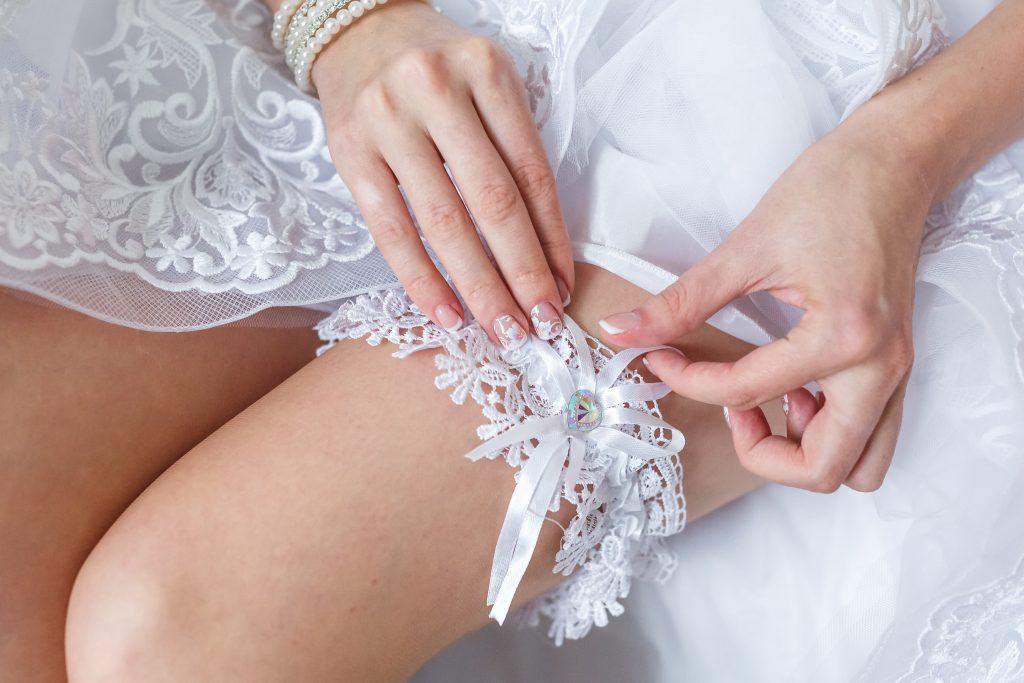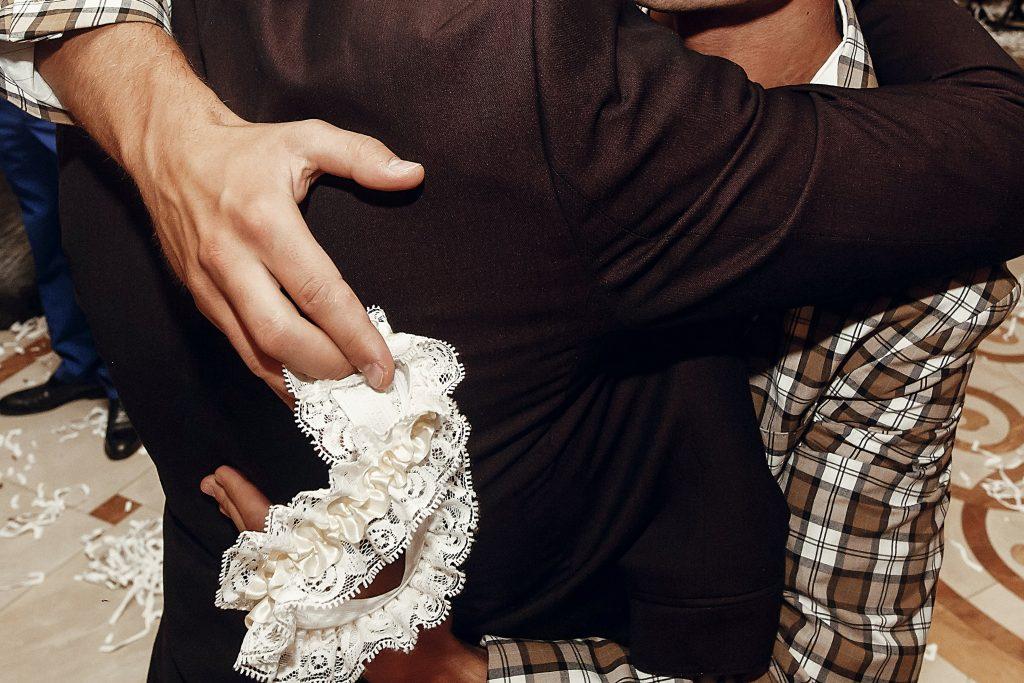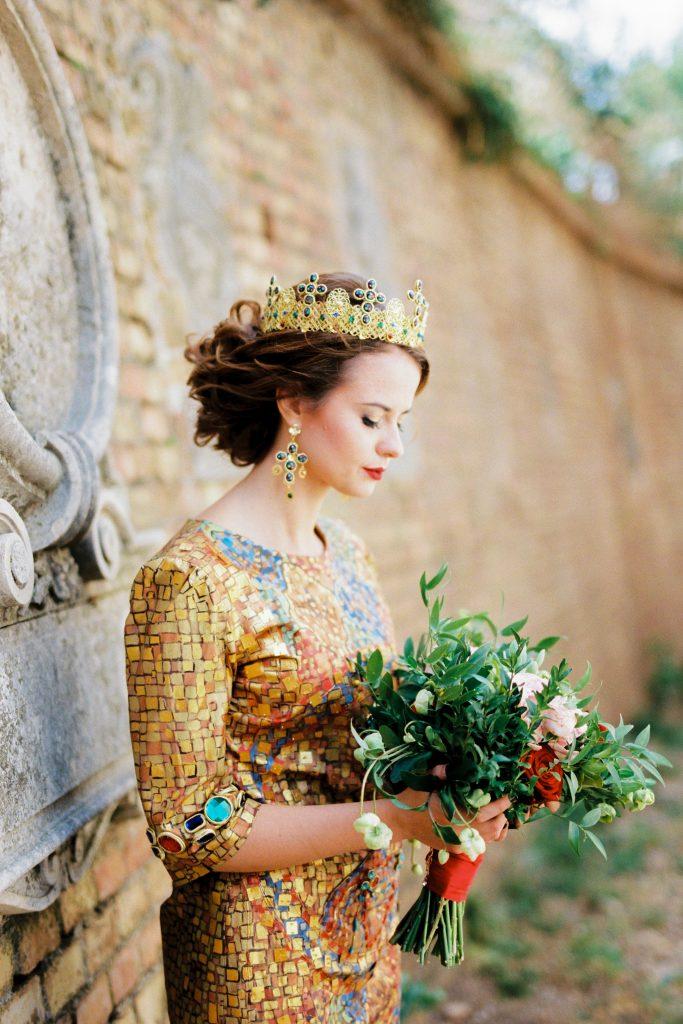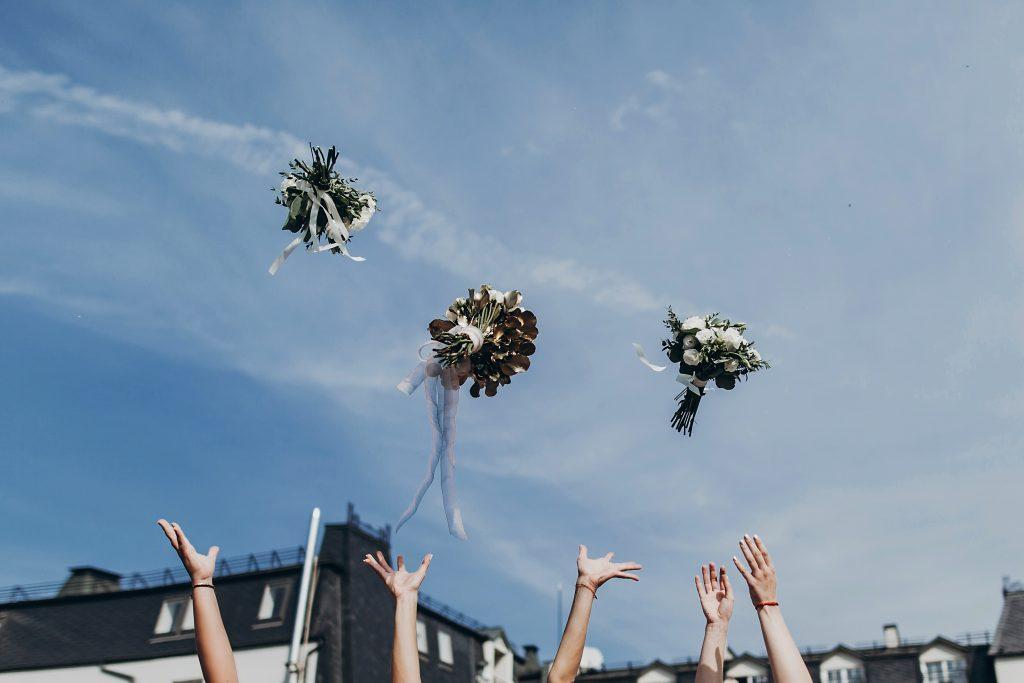History of the Garter Toss
Kara Hyden
When it comes to wedding traditions, there are many for the ceremony and many for the wedding reception. During the wedding reception, there’s a long-standing tradition for the bridal bouquet toss and the garter toss. Have you ever wondered where the tradition of the garter toss came from? Why does the bride wear a garter in the first place? Is there an alternative to the garter toss? Read on to find the answers to all these questions.

What is a wedding garter?
The wedding garter is a piece of fabric-covered elastic a bride wears on her thigh under her wedding dress on the wedding day. The wedding garter most often symbolizes love and luck. It can also be symbolic of family and traditions and is made with heirloom materials and passed down as part of the keepsake wedding dress. Garters are typically made of stretchable fabric and have ribbon, tulle, lace, satin or silk intertwined through the fabric. The garter can also be included in the other bridal tradition of “something old, something new, something borrowed, and something blue”.
What is the garter toss tradition?
The garter is worn on one of the bride’s thighs under her wedding dress. During the reception, the groom removes the garter and tosses it to a group of the single men in attendance. It is basically the male counterpart to the bouquet toss. The bachelor that catches the garter is said to be next in line for love and marriage.


Where does the tradition of the garter toss come from?
There are several stories about the origins of the garter toss. In medieval times, pieces of the bride’s ensemble were considered tokens of good luck. Wedding guests would fight to rip the clothes right off her body! This practice would get so rowdy that couples decided to throw a garter for the guests to fight over instead.
Another origin story, and honestly, a disturbing one, comes from the Middle Ages. The bride and groom had to show proof of their wedding consummation. For it to be proven, it was a common tradition to have people like family and friends come into the room with the couple. The witnesses would obtain the garter as proof. This practice was not appreciated by the groom or the bride, so the groom started tossing the garter out so no one would need to obtain it themselves.
What are some alternatives to the garter toss?
While most brides include the garter as part of their wedding ensemble, many choose other alternatives to this tradition. Some brides don’t wear it for the wedding but save the garter to be worn as an accessory for wedding photos or bridal boudoir shoots, a chic heirloom to keep for future generations, or a sexy addition to the wedding night. Some brides skip the tradition entirely and opt for other alternatives, such as:
- Toss the bouquet only
- Toss the groom’s boutonniere along with the bride’s bouquet and don’t use a garter
- Break up the bouquet and give stems to important guests at the reception
- Host an anniversary dance with all the married couples
- Play a song for the singles and invite all the eligible guests to the dance floor

Regardless of what rituals and traditions you decide to include for your wedding and reception, the garter toss is an optional one. But despite some of the origins of this tradition, the garter toss in today’s weddings is intended to be a light-hearted and fun activity for all involved.

